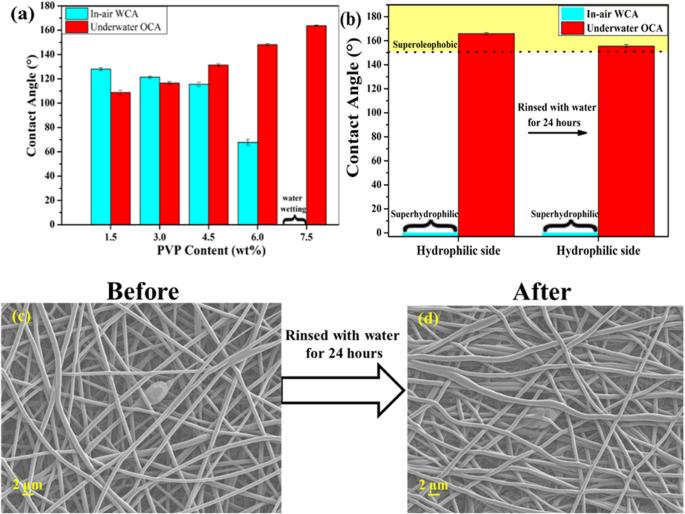Preparation of polysulfone-based nanofiber Janus membrane for membrane distillation containing organic pollutants
IF 10.4
1区 工程技术
Q1 ENGINEERING, CHEMICAL
引用次数: 0
Abstract
Membrane distillation is an emerging wastewater treatment technology that harnesses low-grade heat as an energy source and exhibits potential for complete desalination. Nonetheless, two notable challenges hinder the practical application of this technology: membrane wetting and fouling. To counter these challenges, an innovative anti-fouling Janus membrane with asymmetric wettability was developed through electrospinning. The hydrophobic layer was formed using tetraethyl orthosilicate/polysulfone (PSF), and the superhydrophilic layer was created using polyvinylpyrrolidone (PVP)/PSF. A sensitive adhesion probe was used to assess the anti-fouling performance of the Janus membrane against oil. Molecular dynamics simulation suggested that PVP reduced the adsorption tendency of the membrane for humic acid (HA). Under experimental conditions involving saline water with HA and a saline oil–water emulsion, the non-Janus membrane suffered severe fouling, resulting in rapid water permeate flux decline. However, the Janus membrane demonstrated consistent permeate flux (26.84 LMH and 24.92 LMH) and an impressive salt rejection rate (> 99.99%). This study suggests that the Janus membrane, with its high permeate fluxes and remarkable resistance to fouling and wetting, could be an effective solution for wastewater treatment, with considerable potential for future application.

制备用于含有机污染物膜蒸馏的聚砜基纳米纤维 Janus 膜
膜蒸馏是一种新兴的废水处理技术,可利用低品位热量作为能源,并具有完全脱盐的潜力。然而,膜湿润和结垢这两个显著挑战阻碍了该技术的实际应用。为了应对这些挑战,我们通过电纺丝技术开发出了一种具有非对称润湿性的创新型防污 Janus 膜。疏水层由正硅酸四乙酯/聚砜(PSF)形成,超亲水层由聚乙烯吡咯烷酮(PVP)/聚砜(PSF)形成。使用灵敏的粘附探针来评估 Janus 膜的防油污性能。分子动力学模拟表明,聚乙烯吡咯烷酮降低了膜对腐植酸(HA)的吸附倾向。在含 HA 的盐水和含盐油水乳液的实验条件下,非 Janus 膜遭受了严重的污垢,导致水渗透通量迅速下降。然而,獐子岛膜表现出稳定的渗透通量(26.84 LMH 和 24.92 LMH)和令人印象深刻的盐排斥率(99.99%)。这项研究表明,獐子岛膜具有高渗透通量和显著的抗污垢和抗潮湿能力,可以成为废水处理的有效解决方案,在未来的应用中具有相当大的潜力。
本文章由计算机程序翻译,如有差异,请以英文原文为准。
求助全文
约1分钟内获得全文
求助全文
来源期刊

npj Clean Water
Environmental Science-Water Science and Technology
CiteScore
15.30
自引率
2.60%
发文量
61
审稿时长
5 weeks
期刊介绍:
npj Clean Water publishes high-quality papers that report cutting-edge science, technology, applications, policies, and societal issues contributing to a more sustainable supply of clean water. The journal's publications may also support and accelerate the achievement of Sustainable Development Goal 6, which focuses on clean water and sanitation.
文献相关原料
公司名称
产品信息
阿拉丁
1-butanol
阿拉丁
tetraethyl silicate (TEOS)
阿拉丁
N, N-dimethylacetamide (DMAC)
阿拉丁
corn oil
 求助内容:
求助内容: 应助结果提醒方式:
应助结果提醒方式:


